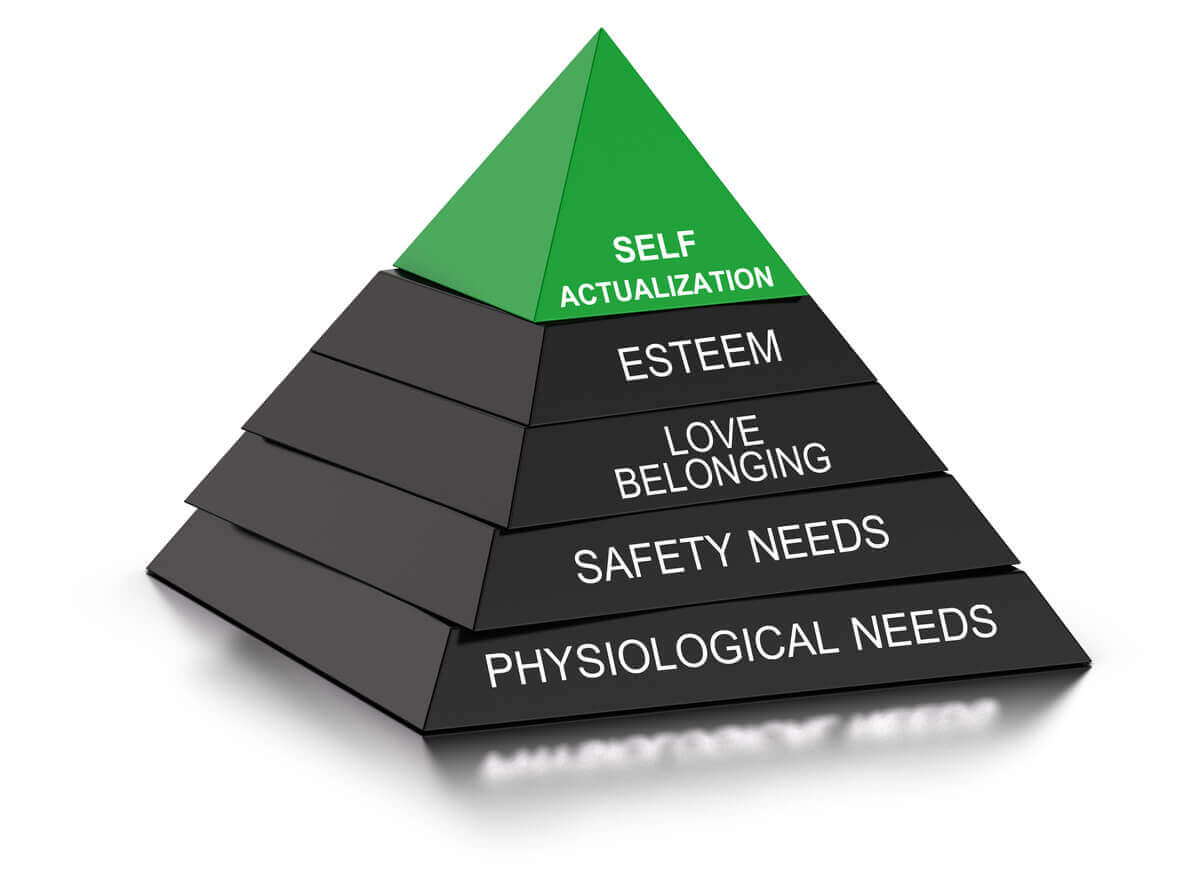Ann Roe's Three Parenting Styles


Written and verified by the teacher Samanta Ruiz
The family environment, especially the relationship with parents, is one of the great determinants of children’s future choices. This was the basis for Ann Roe’s parent-child development theory. Anne Roe (1904-1991) was a psychologist who studied the lives of artists and scientists to theorize about the relationship between parenting and occupational orientations. This work led to his book The Making of a Scientist (1953), where Roe presented all the results of her research. Today, we’ll tell you all about her three parenting styles.
Relationships between parents and children, as the basis of adult decisions
According to Anne Roe’s theory, there are three parenting styles that are well-defined and that give rise to different vocational profiles.
To better understand what this is about, you need to know the concepts derived from Maslow’s pyramid, which is a standardized model of people’s needs.
At the base of this structure are the primary needs or those most important to each individual. Below, we’ll list them from the most basic to the most complex:
- Physiological or biological: These are essential to life and include needs such as food, hydration, or maintaining body heat.
- Protection and security: For example, having a job, having a house, and not being exposed to violence.
- Membership: Participating in social, athletic, or community activities.
- Recognition or esteem: Knowing how society sees us and how we perceive ourselves.
- Self-realization: These needs are particular to each individual and depend on their choices. They’re related to the spiritual world, morals, and life projects.

According to Maslow, progress in satisfying higher needs depends on satisfying the most basic ones.
Meeting Needs and Ann Roe’s Three Parenting Styles
Taking into account the above, Roe classified the relationships between parents and children in the way that we’ll present below.
1. Emotional Concentration
This name is used to define overprotective parents, who always meet the needs of their children and don’t allow them to explore or make their own decisions.
In general, they’re loving and indulgent parents. However, they produce a relationship of belonging and a level of dependency that prevents children’s self-realization. Recognition and esteem within the home are almost non-existent.
According to Roe, this qualification also includes overly demanding or perfectionist parents, whose main goal is for children to obey them and succeed based on their choices (those of the parents).
“Everyone is a genius. But if you judge a fish by its ability to climb a tree, it will live its whole life believing that it is stupid.”
-Albert Einstein-
2. Avoidance of the child
In some parenting styles, the most basic needs of children (safety, food, clothing) are well catered for, but emotional ones are intentionally neglected.
These tend to be cold or hostile parents, who don’t assume their parental role, reject their own children, and can even build family environments of physical and psychological violence.
3. Acceptance of the child
In this type of upbringing, there’s a balance between the two previous styles. These are parents who treat their children well, without oversights or excesses in meeting all their needs.
Within this harmonious family climate, children feel safe and valued. Thanks to this, the entire pyramid is moved up to the level of self-realization, which favors the development of a personal, independent, and autonomous personality.

Current considerations on Anne Roe’s theory regarding three parenting styles
According to Ann Roe’s theory of the three parenting styles, each of them determines a tendency when choosing certain careers. In other words, the degree of satisfaction or dissatisfaction of needs during childhood could be the main motivators behind choosing their profession.
However, it’s important to note that Roe developed this theory in the 1950s and other psychologists later challenged it. The reason was the inconsistency when obtaining her conclusions. Specifically, she failed to take into account other determining factors to satisfy the needs of the children. For example, the family’s socioeconomic level.
Your child, your parenting style
Although it’s interesting to know these types of theories, the most important thing is that each family develops a parenting style whose objective is the well-being of the child.
This includes, in addition to meeting their needs, the ability to reach a healthy balance point for the whole family.
Love, trust, freedom, and support are unavoidable conditions and we must encourage their personal growth so that they can fulfill all their dreams.
The family environment, especially the relationship with parents, is one of the great determinants of children’s future choices. This was the basis for Ann Roe’s parent-child development theory. Anne Roe (1904-1991) was a psychologist who studied the lives of artists and scientists to theorize about the relationship between parenting and occupational orientations. This work led to his book The Making of a Scientist (1953), where Roe presented all the results of her research. Today, we’ll tell you all about her three parenting styles.
Relationships between parents and children, as the basis of adult decisions
According to Anne Roe’s theory, there are three parenting styles that are well-defined and that give rise to different vocational profiles.
To better understand what this is about, you need to know the concepts derived from Maslow’s pyramid, which is a standardized model of people’s needs.
At the base of this structure are the primary needs or those most important to each individual. Below, we’ll list them from the most basic to the most complex:
- Physiological or biological: These are essential to life and include needs such as food, hydration, or maintaining body heat.
- Protection and security: For example, having a job, having a house, and not being exposed to violence.
- Membership: Participating in social, athletic, or community activities.
- Recognition or esteem: Knowing how society sees us and how we perceive ourselves.
- Self-realization: These needs are particular to each individual and depend on their choices. They’re related to the spiritual world, morals, and life projects.

According to Maslow, progress in satisfying higher needs depends on satisfying the most basic ones.
Meeting Needs and Ann Roe’s Three Parenting Styles
Taking into account the above, Roe classified the relationships between parents and children in the way that we’ll present below.
1. Emotional Concentration
This name is used to define overprotective parents, who always meet the needs of their children and don’t allow them to explore or make their own decisions.
In general, they’re loving and indulgent parents. However, they produce a relationship of belonging and a level of dependency that prevents children’s self-realization. Recognition and esteem within the home are almost non-existent.
According to Roe, this qualification also includes overly demanding or perfectionist parents, whose main goal is for children to obey them and succeed based on their choices (those of the parents).
“Everyone is a genius. But if you judge a fish by its ability to climb a tree, it will live its whole life believing that it is stupid.”
-Albert Einstein-
2. Avoidance of the child
In some parenting styles, the most basic needs of children (safety, food, clothing) are well catered for, but emotional ones are intentionally neglected.
These tend to be cold or hostile parents, who don’t assume their parental role, reject their own children, and can even build family environments of physical and psychological violence.
3. Acceptance of the child
In this type of upbringing, there’s a balance between the two previous styles. These are parents who treat their children well, without oversights or excesses in meeting all their needs.
Within this harmonious family climate, children feel safe and valued. Thanks to this, the entire pyramid is moved up to the level of self-realization, which favors the development of a personal, independent, and autonomous personality.

Current considerations on Anne Roe’s theory regarding three parenting styles
According to Ann Roe’s theory of the three parenting styles, each of them determines a tendency when choosing certain careers. In other words, the degree of satisfaction or dissatisfaction of needs during childhood could be the main motivators behind choosing their profession.
However, it’s important to note that Roe developed this theory in the 1950s and other psychologists later challenged it. The reason was the inconsistency when obtaining her conclusions. Specifically, she failed to take into account other determining factors to satisfy the needs of the children. For example, the family’s socioeconomic level.
Your child, your parenting style
Although it’s interesting to know these types of theories, the most important thing is that each family develops a parenting style whose objective is the well-being of the child.
This includes, in addition to meeting their needs, the ability to reach a healthy balance point for the whole family.
Love, trust, freedom, and support are unavoidable conditions and we must encourage their personal growth so that they can fulfill all their dreams.
All cited sources were thoroughly reviewed by our team to ensure their quality, reliability, currency, and validity. The bibliography of this article was considered reliable and of academic or scientific accuracy.
- Reyes F. Anne Roe (1904-1991). Revista Latinoamericana de Psicología, vol. 25, núm. 3, 1993, pp. 519-521
Fundación Universitaria Konrad Lorenz. Bogotá, Colombia. Disponible en: https://www.redalyc.org/pdf/805/80525321.pdf - Universidad Americana de Europa. ¿Para qué sirve y como me afecta la pirámide de Maslow? [Internet] Abril 2020. Disponible en: https://unade.edu.mx/para-que-sirve-la-piramide-de-maslow/
- Roe, A. A Psychologist Examines 64 Eminent Scientists. SCIENTIFIC AMERICAN NOVEMBER 1952. Disponible en: https://www.scientificamerican.com/article/a-psychologist-examines-64-eminent/
This text is provided for informational purposes only and does not replace consultation with a professional. If in doubt, consult your specialist.








